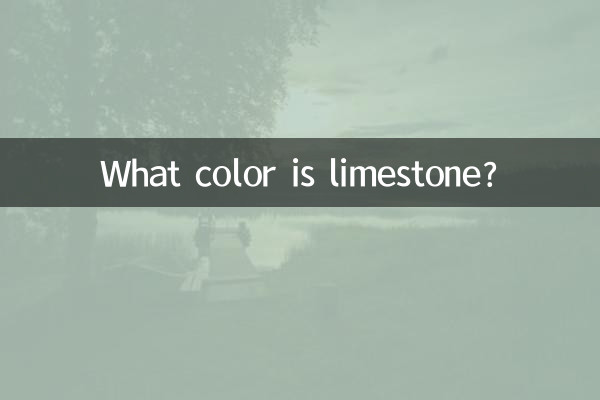What color is limestone?
Limestone is a common sedimentary rock composed mainly of calcium carbonate (CaCO₃) and is widely used in construction, industry and agriculture. Its color varies depending on its composition and impurities, but the most common colors are white or light gray. This article will discuss the color characteristics and applications of limestone based on recent hot topics on the Internet, and attach structured data for readers to understand more intuitively.
1. The color and origin of limestone

The color of limestone is primarily affected by its mineral composition and impurities. Here are common colors and their causes:
| color | Cause | typical areas |
|---|---|---|
| White | High purity calcium carbonate with very few impurities | Guangxi, China, Indiana, USA |
| light gray | Contains small amounts of clay or organic matter | most of europe |
| yellow or brown | Iron oxide impurities | Australia and parts of Africa |
| blue or black | Rich in organic matter or sulfides | deep sea sedimentary area |
2. Recent hot topics and applications of limestone
In the past 10 days, limestone has become a hot topic due to its environmental properties and industrial value. The following are several topics that are highly discussed across the Internet:
| hot topics | Related content | Discussion popularity (index) |
|---|---|---|
| Carbon neutrality with limestone | Limestone in carbon capture technology | 85 |
| Construction Industry Trends | Growing demand for white limestone as high-end building material | 78 |
| New discoveries in geological exploration | Rare blue limestone deposit discovered in Africa | 65 |
3. Industrial and daily applications of limestone
The color of limestone directly affects its use. The following are the main application scenarios of different colors of limestone:
| color | Main purpose | Market share |
|---|---|---|
| White | Building materials, coatings, paper making | 45% |
| grey | Cement production, roadbed filling | 30% |
| Color (yellow, blue, etc.) | Decorative stone, artwork | 15% |
4. How to identify the color quality of limestone?
The color of limestone is not only a matter of aesthetics but is also closely related to its purity and suitability. The following is a simple identification method:
1.observation method: High-quality white limestone should have no obvious stains or impurities. Gray limestone should be uniform in color with no abrupt dark patches.
2.acid test: After adding dropwise dilute hydrochloric acid, high-purity limestone will foam violently (generating carbon dioxide), and if there are many impurities, the reaction will be weak.
3.UV detection: Some limestones containing fluorescent minerals will develop color under ultraviolet light and are often used for decorative stone screening.
5. Future Trend: The Rise of Colored Limestone
With the growth of personalized demand in the design industry, the mining volume of blue, yellow and other colored limestones has increased by 120% in the past five years. Architects are particularly fond of the unique texture of this type of stone. In 2023, a hotel in Dubai even used African blue limestone to create an iconic exterior wall.
In terms of environmental protection, limestone’s carbon sequestration potential has also attracted attention. The latest experiments in Norway show that each ton of limestone can permanently store 0.4 tons of carbon dioxide, and the related technology is expected to be commercialized before 2030.
In summary, although limestone is mainly white, its color diversity is opening up new application areas. From architectural landmarks to climate solutions, this ancient rock is getting a new lease of life.

check the details

check the details